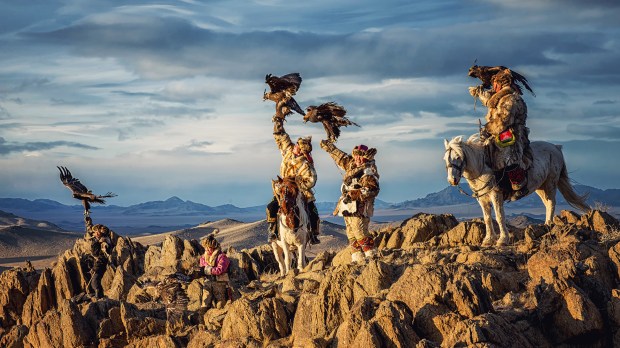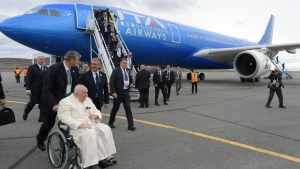Pope Francis’ trip to Mongolia, from August 31 to September 4, 2023, will be an opportunity for the Pontiff to address a people with diverse and ancient religious traditions. Talking about God in this context will be a challenge for the Pope, who has made fraternal dialogue with other religions one of the key aspects of his pontificate.
In Mongolia, monotheistic religions — principally Islam and Christianity — are very much in the minority. Half the population is now Buddhist, but the country is still marked by years of state atheism of the Communist period (over 40% of the population report being non-believers) and by a very ancient shamanic tradition, Tengrism, which gives rise to numerous syncretic practices.
In this society of 3.3 million inhabitants, religion is a complex and often political issue. Yet, the figure of Genghis Khan (c.1160-1227) unites — spiritually or historically — the different branches of the country’s religious traditions. In an essay published in 2016, French anthropologist Roberte Hamayon notes that, after the communist period, the populations of Central Asia felt the need to revive their religious past. That included finding their own deities and forming national religions. In Mongolia, the mythical figure of Genghis Khan, the founder, became exalted.
In the 2000s, The Secret History of the Mongols, a 13th-century text which recounts the genealogy and history of the great leader, began to be used as a kind of bible. However, the quasi-divinization of Genghis Khan goes back a long way. It has its roots in the traditional figure of the Mongol chief, who derived his power from his special link with “Tenger” — the “sky” — in which he was purportedly able to read omens.
Tengrism, a heaven without God
This elemental, shamanic link with the heavens lies at the heart of “Tengrism,” the great spiritual tradition of Central Asia. In the 12th century, the Flemish missionary Guillaume de Rubrouck already noted that the term “khan” was a “title of dignity, which has the same meaning as diviner (…); hence their princes have taken this name, because their office is to govern peoples by means of auguries.” But in this religious system, “heaven” is not a person, and even less a divinity, says Roberte Hamayon.
This conception was to take on a syncretic form in the Tantric Buddhist tradition, with the figure of Gesar, the hero of an epic that bears his name. In Mongolian Buddhism, the hero Gesar is seen as an incarnation of the war god Begtse, a wrathful deity whose function is to protect the good practicing Buddhist, but who is in no way a creator or all-powerful God.
This mythical king is known to be accompanied by 33 heroes, the “baatar.” This term is found in the name of the capital, Ulaanbaatar, which means “red hero,” the nickname of the Mongolian communist revolutionary Damdin Sükhbaatar.
Buddhism, Mongolia’s structuring power
Present in Mongolia since the 8th century, Buddhism really took hold in the 13th century with Genghis Khan’s grandson, Kublai Khan, founder of the Yuan dynasty which reigned over China for a century (1271-1368). He decided to embrace Tibetan tradition and impose it on his people. However, the shamanic tradition regained the upper hand after the fall of his empire.
Tibetan Buddhism made a comeback in the 16th century with Altan Khan, a ruler who used Buddhist monks to consolidate his power, drawing inspiration from the glorious past of Genghis Khan’s dynasty. Religion took on increasing importance, culminating in the early 20th century with Bogd Khan, who was both Mongolia’s political leader and the most important “lama” in the country’s Buddhist religious hierarchy.
Having become a veritable state within the state, the powerful network of monasteries was brutally dismantled by the Communists who came to power in 1924, and was only reconstituted after the fall of the Berlin Wall. By the end of the 1990s, Buddhism was presented as the national religion by authorities and practiced by half the country’s population.
The Tibetan Buddhism practiced in Mongolia does not believe in the existence of a supreme deity, but encourages the veneration of local gods and spirits. It also values supernatural personalities such as Buddha, a human being who was able to reach the stage of enlightenment and thus experience a form of divinity; Buddha means “awakened.”
Genghis Kahn, grandfather of Central Asian religions
In Mongol history, Genghis Khan’s descendants took an interest in the Muslim and Christian traditions that the Mongol hordes encountered along the way. An Islamic presence at the heart of the Mongol empire can be traced back to the 13th century, under the reign of his great-grandson Ghazan, who converted and founded the Ilkhanate, a Muslim empire that extended into Persia and the Caucasus in the 14th century. Berke, another grandson of Genghis Kahn, known as the founder of the Golden Horde — which stretched from Ukraine to Mongolia until the 14th century — also converted to Islam. Today, 2% of Mongolia’s population is Muslim, and believes in Allah, the God revealed to the prophet Mohammed.
In the 13th century, one of Genghis’ sons, Tolui, became a protector of the Nestorians, a Christian heresy then present throughout the region. Although he chose Tibetan Buddhism, his son Kubilai Khan would be raised by Nestorians, but forbidden to be baptized. Nestorianism eventually disappeared, and Christianity returned much later with two waves of missionaries, the first from the 19th century to the communist period, and the second starting at the beginning of the 21st century.
Today, the small Catholic community rubs shoulders with the Orthodox, present to accompany the Russian diaspora, and with Protestant and evangelical missionaries. The latter are particularly active in proselytizing and are a source of tension with the government and other religions. “As Christians, we’re all lumped together,” a former missionary in Mongolia tells I.MEDIA.
When speaking of God, Roberte Hamayon notes that Mongolian Christians have often used the term “Burhan,” meaning “noble power.” This word is also used to refer to Buddha. Sometimes they use “Iertönciin Ezen,” meaning “master of the universe” — a term also used to refer to Genghis Khan. However, its Christian use was deemed offensive by the Mongols and therefore abandoned. In his 2008 English-Mongolian Christian Catholic Dictionary, French priest Pierre Palussière proposes the composite term “Tengerburhan,” which combines the concepts of Tenger (heaven) and Burhan.



